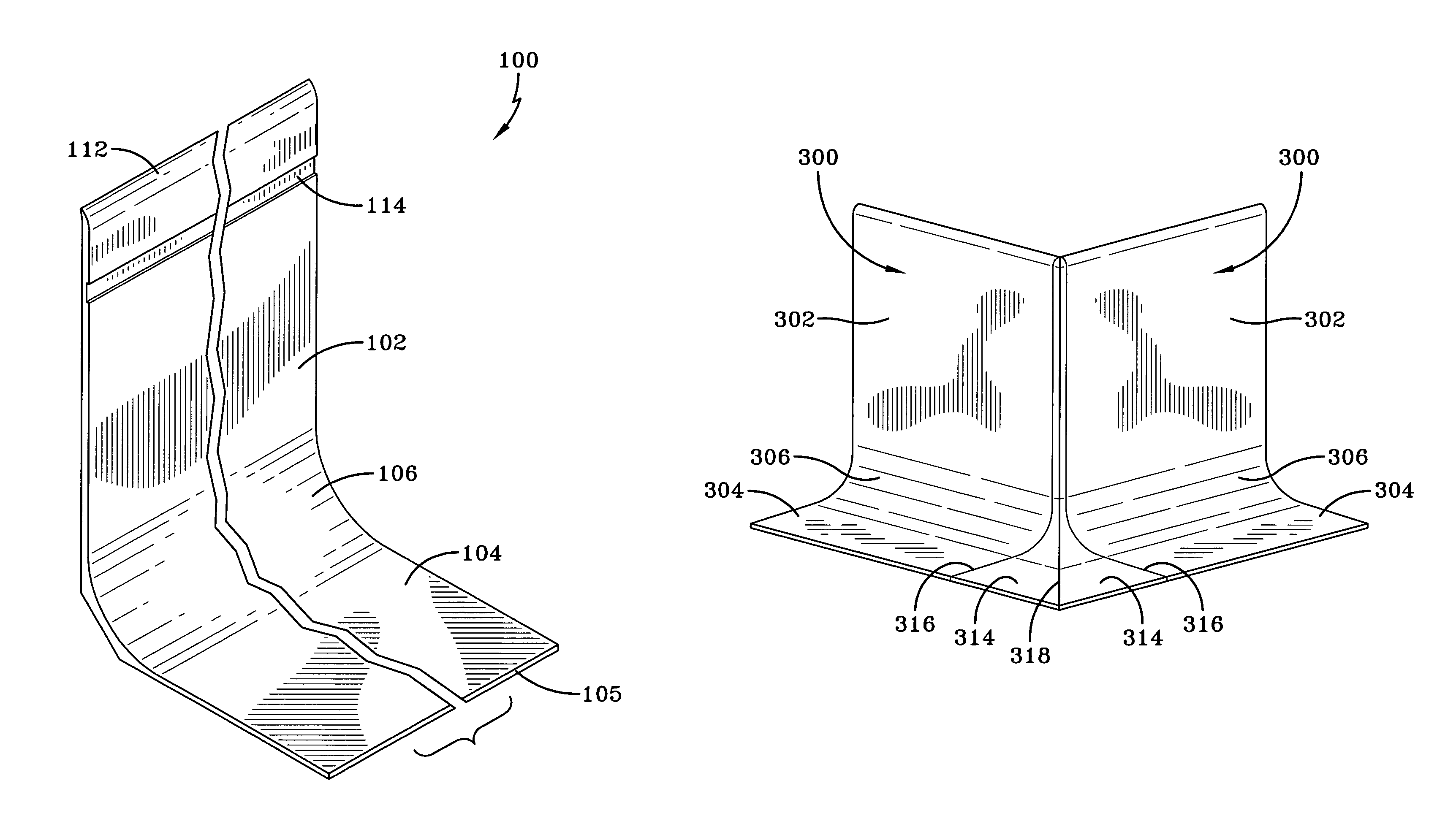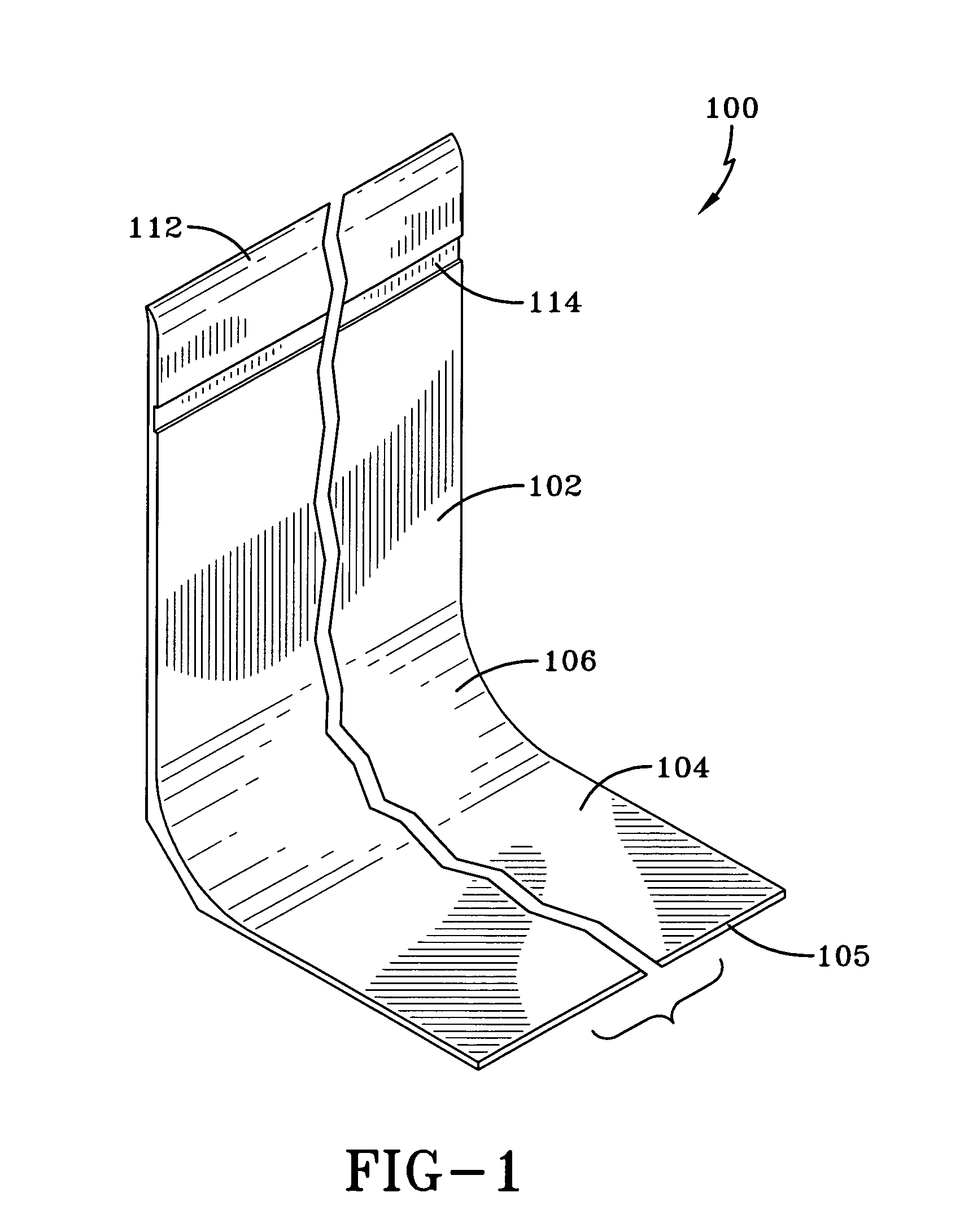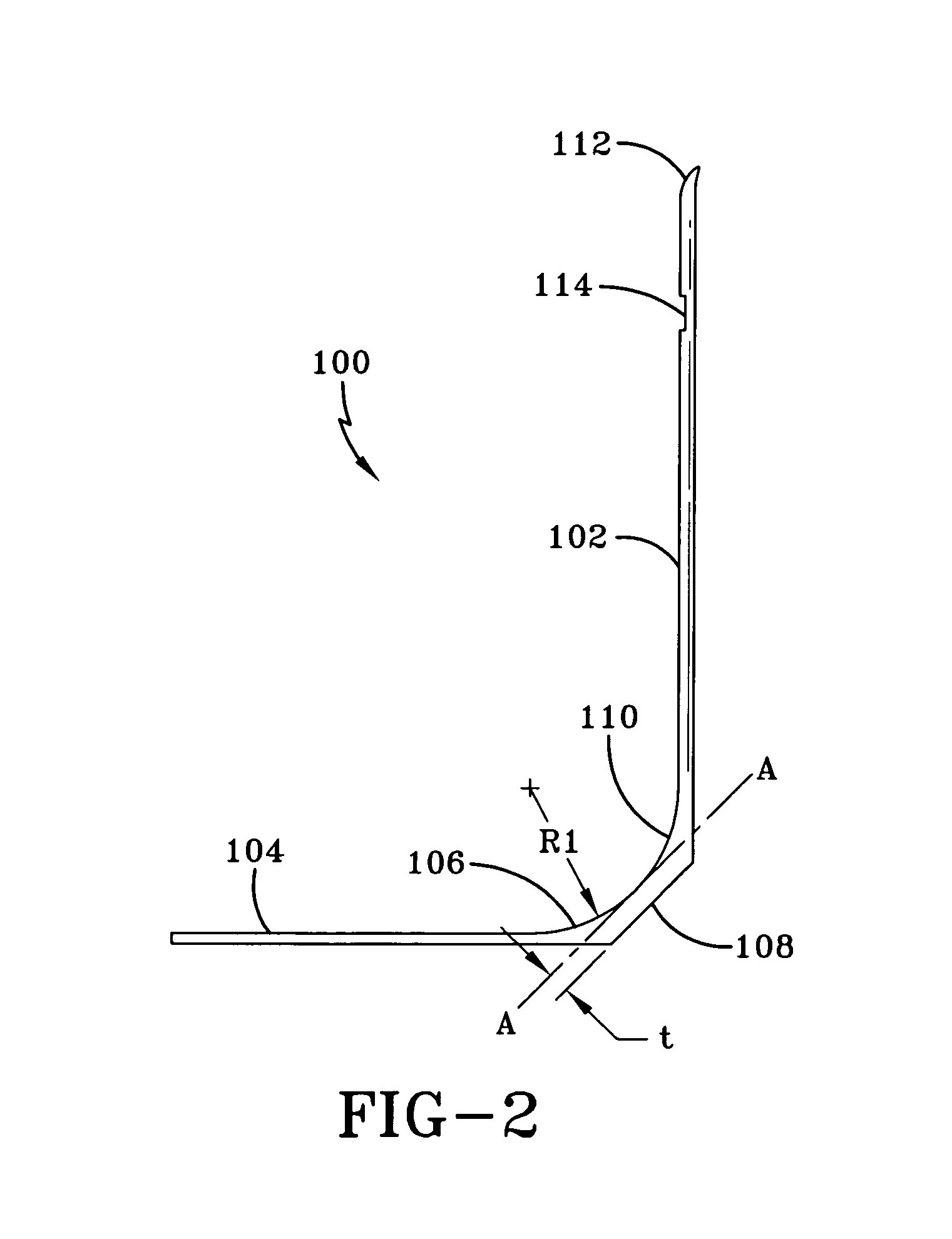Integral wall base and flash cove
a technology of integrated wall bases and flash coves, which is applied in the direction of walls, constructions, building components, etc., can solve the problems of insufficient surface area to adhere to the floor, easy to be punctured or damaged, and difficult to clean, so as to reduce significant construction time and money, reduce the amount of tools needed, and facilitate installation
- Summary
- Abstract
- Description
- Claims
- Application Information
AI Technical Summary
Benefits of technology
Problems solved by technology
Method used
Image
Examples
Embodiment Construction
[0045]Disclosed according to the preferred embodiment of the present invention are integral wall bases and flash coves and uses thereof. The integral wall base and flash cove eliminates the need for a cove stick required for typical flash coving. The integral wall base and flash cove also eliminates the need to make inside and outside corners. The integral wall base and flash cove can be cut with a miter saw, utility knife, or similar tool, to make outside and inside corners without the need of a separate molded corner piece at all, and without the necessary labor for attaching the latter corner piece to the integral wall base and flash cove as described below. The elimination of the cove stick and the need to precisely cut the outside and inside corners greatly reduces the number of steps and skill required, and ultimately, the installation time. Essentially, the present invention can be easily installed as a finished product and eliminates various steps and procedures of the prior...
PUM
| Property | Measurement | Unit |
|---|---|---|
| length | aaaaa | aaaaa |
| lengths | aaaaa | aaaaa |
| angle | aaaaa | aaaaa |
Abstract
Description
Claims
Application Information
 Login to View More
Login to View More - R&D
- Intellectual Property
- Life Sciences
- Materials
- Tech Scout
- Unparalleled Data Quality
- Higher Quality Content
- 60% Fewer Hallucinations
Browse by: Latest US Patents, China's latest patents, Technical Efficacy Thesaurus, Application Domain, Technology Topic, Popular Technical Reports.
© 2025 PatSnap. All rights reserved.Legal|Privacy policy|Modern Slavery Act Transparency Statement|Sitemap|About US| Contact US: help@patsnap.com



